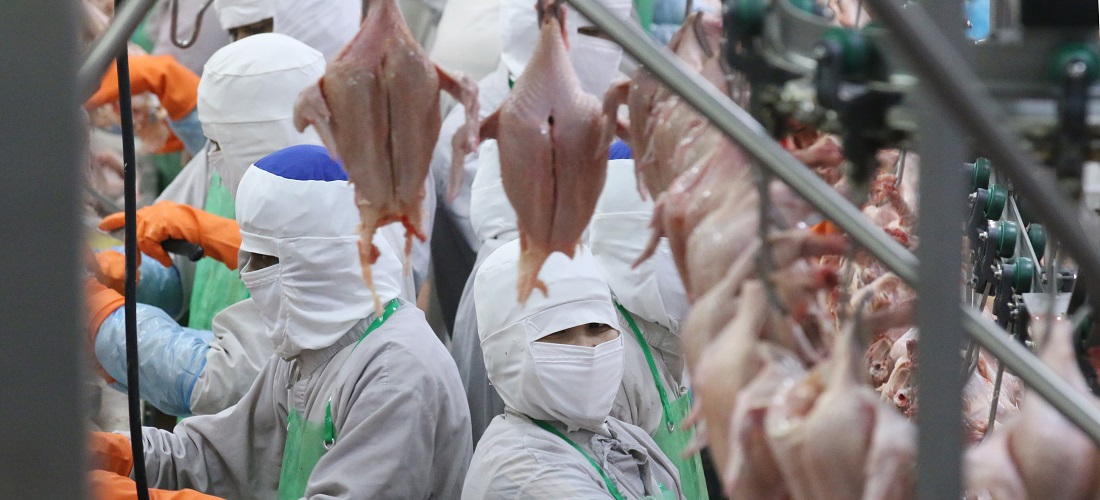
Brazil losing meat opportunities without new qualifications by China, says BRF
Jul, 06, 2021 Posted by Ruth HollardWeek 202128
With no new approvals for refrigeration units by the Chinese since the beginning of the pandemic, Brazil is losing opportunities and still faces strong competition from the United States, evaluated this Tuesday an executive from BRF, the largest global exporter of chicken.
“I hope we can make progress on this issue. The most practical answer to the question is that we have lost opportunities,” said the executive manager for Institutional Relations at BRF, Luiz Tavares, when commenting on the question about the lack of qualifications for new Brazilian units.
He pointed out that Brazil has advanced with exports, but at the same time it began to face strong competition from the United States, especially in terms of chicken meat.
“But it is important to contextualize the United States as a great power in agribusiness. It has been prohibited to export poultry to China since 2015 due to bird flu, and all of a sudden we have the US accessing the Chinese market with more than a thousand licensed establishments, while Brazil has had no license for almost two years.”
The comments were made during an online event of the Brazilian Center for International Relations (Cebri) on perspectives of the Brazil-China strategy in Agribusiness, a meeting that also included other authorities.
“It’s in the market, highly competitive, the demand is very high, and suddenly one of the biggest global players appears on your side, it’s complicated for Brazilian exporters,” said Tavares, referring to the advance of the USA in the international scenario.
In chicken, China does not appear among the most important destinations of Brazilian exports, unlike for pork. In beef cuts, a decline in Brazilian shipments in May was driven by lower Chinese demand for the national product.
See below a history of Brazilian chicken exports to China from 2018. Data are from DataLiner:
Brazilian Export of Chicken (HS 0207) to China | Jan 2018 to May 2021 | TEU
Graph source: DataLiner (To request a DataLiner demo click here)
According to the BRF executive, the ideal would be for Brazil and China to have a trade agreement between them so that both could move forward in “concrete commitments”.
He mentioned that there is still no clarity about how China’s relationship with the new US administration will be and that perhaps this is the moment for Brazil to take a stand.
The ambassador of Brazil to China, Paulo Estivallet de Mesquita, commented at the same event that the pandemic really affected the process of qualifying new slaughterhouses.
“Since the beginning of the pandemic, the approval process has been suspended. It’s been over a year and a half that we haven’t had approval for any new establishments. Despite this, authorized establishments managed to expand exports”, he commented.
Asked about the possible resumption of certification and how many slaughterhouses could be certified in the short term, the Counselor Minister for Economic and Commercial Affairs at the Chinese Embassy in Brazil, Shao Yingjun, said that Brazil is one of the countries with the most qualified companies and cited 102 units authorized to export to China.
She said that the two countries are working together to promote trade and facilitate the exchange of products and that there are some commissions responsible for evaluating the issue of qualifications. But he didn’t go into details about concrete moves.
Source: Money Times
To read the full original article, visit the link: https://www.moneytimes.com.br/brasil-perde-oportunidades-em-carnes-sem-novas-habilitacoes-pela-china-diz-brf/
-
Ports and Terminals
Jun, 29, 2022
0
Minas Gerais ponders creating new rail connection to the Port of Açu
-
Economy
Feb, 14, 2022
0
Bolsonaro in Moscow: Russia accounts for 0.6 of Brazil’s total exports
-
Trade Regulations
Mar, 10, 2020
0
Argentine farmers start four-day strike against increased export tax
-
Other Cargo
Jul, 07, 2023
0
Brazil chocolate market grows in production and exports



